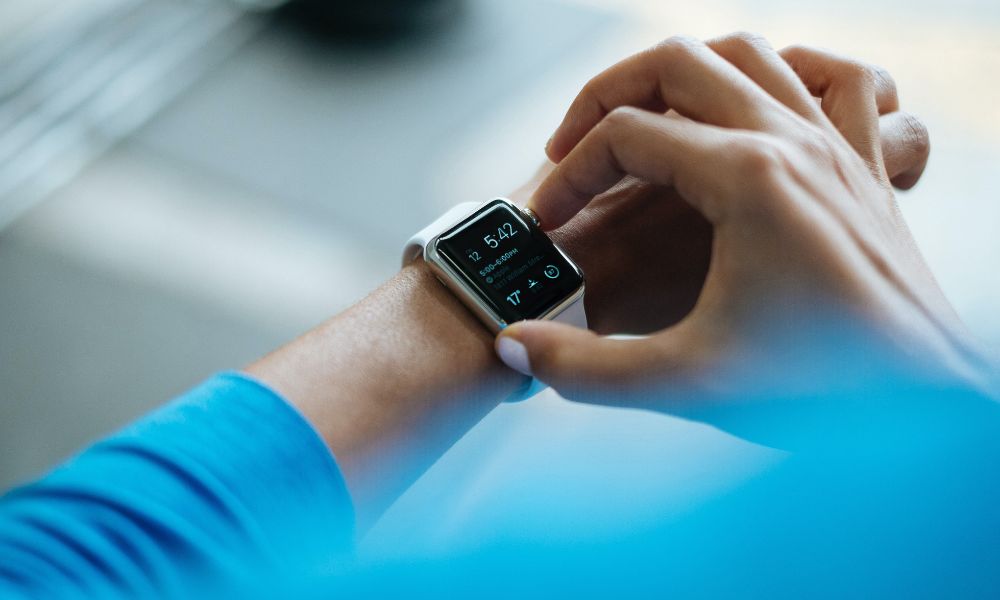Technology is transforming the world we live in and healthcare is no exception. The pandemic has accelerated Big Tech’s interest in healthcare; the Big Four, Alphabet, Apple, Amazon and Microsoft, are all showing much more of an interest in how we prevent illnesses and care for the unwell.
The healthcare market is certainly a lucrative one. In 2018, it was already worth $8.45 trillionn, and the growth of the market has only been accelerated by the pandemic. Indeed, Google’s acquisition of Fitbit for $2.1bn highlights the potential for large amounts of investment and return for Big Tech.
As the relationship between healthcare and major tech companies is strengthened, it has the potential to significantly change the sector. So, what are the possible impacts?
The largest impacts of technology in healthcare include:
- Reduced stress on health services
- Healthcare data distribution
- Improved access to care
- Faster and more accurate diagnostics
- Improved mental health support
1. Reduced stress on health services
Building the relationships between Big Tech companies and healthcare has the potential to reduce stress on the NHS. Wearable fitness devices, such as the Apple Watch, can build profiles of users and be used to manage chronic conditions or communicate to users if they are at risk of diabetes. Research by Pletex suggests the use of such devices could cut the NHS costs per patient by up to 60 per cent. Working in this preventative way can help to provide care to patients before they require hospitalisation or treatment.

Technology’s role in impacting diabetes management
Amazon’s Alexa is also being tested as a way to help people with diabetes manage the disease. Alexa currently enables new patient touchpoints via Skills. Users can query their last blood sugar reading, call caregivers and schedule appointments. In an increasingly digital world, employing technology for preventive healthcare has huge potential.
2. Healthcare data distribution
The healthcare sector provides another opportunity for the Big Four to gain access to user data. Patient data combined with user connectivity could make a company very valuable. Apple, in particular, is interested in helping users securely manage and organise health data. With an Active Installed Base of one billion, Apple has a ready and waiting platform to capture health data.
Concerns over health data security
However, there are concerns about the potential of health data security. Big Tech wants the right to collect data, yet, once data is moved offshore, there is no guarantee UK GDPR laws will be enforced. This could lead to patient’s private data being leaked. Indeed, only 19 per cent of the public believe tech companies have their best interest at heart, begging the question of whether they would accept Big Tech having control of extremely private data.
The global distribution of patient data could also lead to a loss of valuable resource for research and health service planning for the NHS. If the data is then used to create new tools, this could be costly with the NHS having to buy back services created by its own data.
3. Improved access to care
Whilst wearable technology bringing healthcare into the hands of the individual, empowering them with informed health-based decision making, the impact is reduced when you consider developing nations or older generations where this wearable technology is either too expensive to access or simply to difficult to understand.
Reaching remote populations with technology
However for under-served and more remote populations, telemedicine and mobile health can make healthcare incredibly more accessible to those who potentially need it more. Telemedicine gives populations with access to an internet connection, the ability to arrange and carry out a consultation with a doctor remotely, reducing the need for travel and softening the impact on work attendance.

This technology integration into doctor consultations is having positive impacts in China, where compared to the UK where there is 2.9 doctors for every 1,000 people, in China there are just 2 doctors for every 1,000 people. There is also a far larger rural population in China to manage. Thanks to the country-wide integration of telemedicine and mobile consultation, a quarter of time spent online is now spent on medical related-activities.
4. Faster and more accurate diagnostics
There is significant evidence to suggest that when cancer is identified and diagnosed at an early stage, there is a far higher chance of survival. And whilst education and awareness on cancer symptoms can improve the efficiency and speed at which cancer is diagnosed, increased distractions and long workdays in developed nations can limit how effective relying on awareness alone can be.
Using AI technology in diagnostics
However in combination with wearable technology, emerging technologies such as artificial intelligence (AI) and machine learning can assist healthcare professionals and patients in diagnosing diseases such as cancer as well interpreting medical images more quickly and accurately. This enhanced identification that AI and machine learning offers can lead to earlier detection, prevention and ultimately survival.
Watch Navid Toosi Saidy PhD’s Tedx talk on AI’s opportunities for healthcare:
The UK, along with other northern and western European nations are making progressive steps in integrating AI safely into healthcare. Imperial College London for example are using AI to develop diagnostic tools for tuberculosis. The London researchers are training an artificial intelligence system to analyse chest X-rays and detect early signs of the disease.
5. Improved mental health support
In countries such as the UK, public health services are failing to meet the rising demand for mental health support with the health service requiring a doubling in it’s mental health funding to support the 400,000 people per month requiring mental health support in the country.
However, it’s the technology sector that are taking matters into their own hands by creating brand new innovations in mobile health support that not only fill the gap for mental health diagnosis but also remedy the often turbulent and daunting experience of travelling and meeting a healthcare professional in person that discourages so many from reaching out for support.

Adopting teletherapy in developing nations
Innovations such as teletherapy and mental health apps provide access to mental health services for those who may be reluctant to seek in-person care. For example, in Africa where 46% of it’s countries do not have mental health policies, usage of mobile technology and access to an internet connection is rapidly increasing. In Ghana mobile phone ownership increased rapidly between 2002 and 2015 from 8% to 83%. This increased use of mobile technologies allows new teletherapy and mental health apps to provide remote mental health support and treatment to those who need it most.
Concluding thoughts
In conclusion, healthcare is being forced to move on with its digital transformation. Tech giants are well-positioned to invest and create measurable impact with their own healthcare ambitions. If managed correctly, Big Tech has the potential to work collaboratively with healthcare and provide a more effective and more prevention-focused experience.
–
We are CPS, the experts at finding experts. A leading technology recruitment specialist who for over two decades, have been helping clients grow by bringing the best permanent and interim talent finding services to their teams, including data recruitment and software recruitment services.
Written by Elisabeth.
